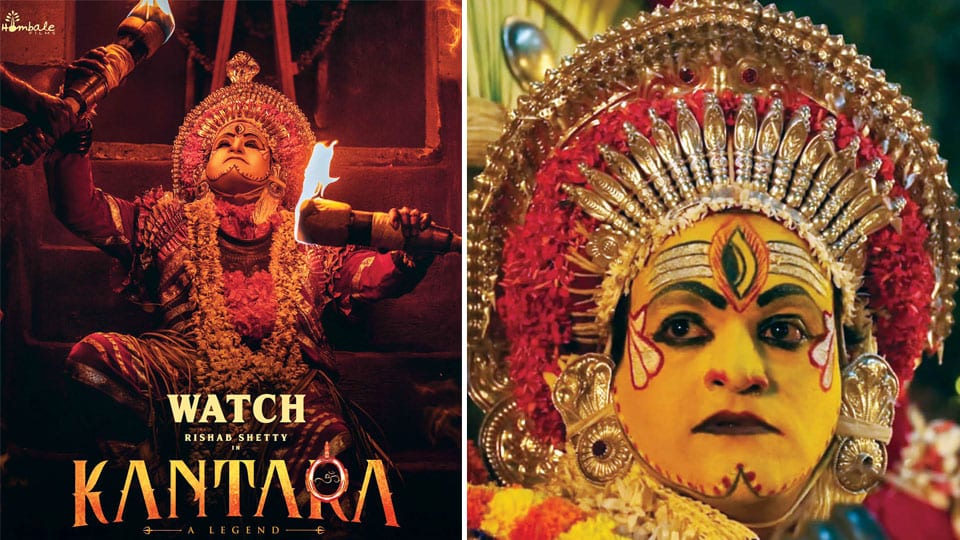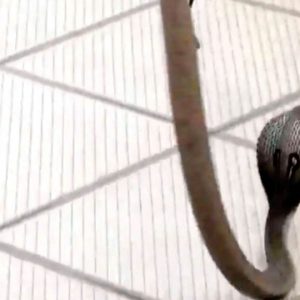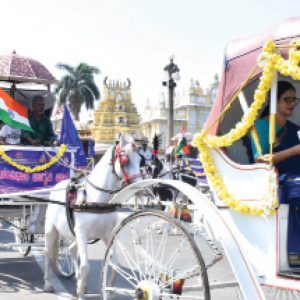By Devdutt Pattanaik
The movie Kantara has broken all records and has a universal appeal. Though the movie saw a phenomenal run at the box office, social media is abuzz with discussion on topics like the performance of protagonist Rishab Shetty, the thought process of the movie that is termed by some as regressive and gave a new excuse to superstition.
Renowned author, speaker, illustrator, mythologist and Star of Mysore columnist Devdutt Pattanaik, known for his lucid take on mythological texts and figures, deconstructs the political and cultural motifs of Kantara in this interview.
You tweeted that Kantara may not work in North India. Some people got upset with that. What was that about?
Devdutt: Local films do have global appeal if they connect to basic human emotions. Kantara did that successfully. However, the Hindi-speaking belt has a bad reputation. It sees everything south as ‘Madrasi’ and does not distinguish between Kerala, Karnataka, Andhra, Tamil Nadu or Telangana, let alone the subtle difference between North and South Karnataka.
Even now, to popularise the film in the Hindi belt, we see Panjurli, the local deity of South Karnataka, being equated with ‘Varaha Rupam’ of Vishnu Purana, thus diluting the local to appeal to the Hindi belt.
How is folk (desi) Hinduism different from classical (margi) Hinduism?
Devdutt: Classical Hinduism emerged in the Gangetic plains, just like Buddhism and Jainism, and spread across India, absorbing local beliefs and practices. In margi parampara, Brahmin and Sanskrit dominate; not in desi parampara. Koti Chennaya would be an epic of folk Hinduism, while Ramayana is an epic of classical Hinduism.
Panjurli of Bhoota Kola is folk Hinduism, rooted in the land, to the local community. He talks to people through the medium of the mask-wearing dancer-priest who goes into a trance. Varaha of Vishnu Purana is classical Hinduism, rooted in Brahmin lore, and traceable to Vedic rituals.
Giant images of Varaha became popular during the rule of Gupta-Vakatas and Chalukyas, 1,500 years ago, when the king was seen as the wild boar who saves the earth from the sea of enemies. In folk Hinduism, Gods eat what people eat — even fish, meat and alcohol. In classical Hinduism, purity is associated with vegetarian food. Kings hunt and eat wild boar. But so-called ‘lower’ castes are linked to domesticated pig which is considered impure. In the movie Kantara, the King who is unhappy and is not getting peace goes to a Brahmin guru and falls at his feet. But that does not work. The solution comes from a local deity who demands the forest be left alone.
This is a powerful way of positioning folk Hinduism over classical Hinduism. The deity is stating that the king will get peace of mind if he leaves the forest alone. We can say that Panjurli is the voice of the forest people, while Varaha is the king who rules the forests.
What do you know about Bhoota Kola?
Devdutt: Bhoota Kola is a ritual that you find in the southern part of Karnataka. It is similar to Theyyam of North Kerala. The word Bhoota means spirit, usually of a great hero who died fighting wild animals or thieves or invaders. Theyyam or Dhaivam means deity.
In this ritual, a human being, usually belonging to what is called the lower strata of society, goes through certain rituals.
This includes fasting for many days and a vigil. After which he goes through an elaborate transformation with costumes and makeup. Music is played in the middle of the night and a lot of lamps and camphor are lit. It puts the man into a kind of trance, in which the individual identity disappears and the deity or spirit enters his body. The God talks through him to the general public. He becomes the deity at the time.
When the man becomes a deity, he becomes higher than the highest caste. Questions are asked to the deity which he answers. He gives views, opinions and judgements. So that is the ritual basically being presented in Kantara.
What makes Kantara so different from Bollywood Hindi films?
Devdutt: Unlike Bollywood, I find a hero who is not fair but dark, who is not perfect, he drinks and gets involved in fights. He is rowdy, aggressive, who doesn’t treat women respectfully but somehow that is supposed to be cute and endearing. He also comes from the lower socio-economic strata. He likes to eat fish, meat and chicken.
These are the things that we don’t find in Bollywood films, where people are fair, usually Punjabi, with names like Gupta, Kumar and Singh. What is also interesting in Kantara is how subtly the politics are played out. We find conflict between upper and lower castes, upper and lower classes, tribal and agricultural communities and the State, believers and non-believers, and Brahmanical and non-Brahmanical ideologies.
Do you think Kantara promotes Hindutva?
Devdutt: I think it is the other way around. It is election time and so Hindutva politicians are promoting Kantara by highlighting its supernatural elements and downplaying its political themes. Kantara presents ideas that would make a typical Hindutva politician very uncomfortable. I found at least seven or eight instances where caste matters were highlighted is shown like not entering the landlord’s house, not eating food with him, not touching his hand etc.
The hero is friends with a Muslim who bursts crackers during a local village festival. The hero drinks and eats meat. The hero has more faith in his God than in the State and the Government. The film shows how laws can be manipulated by politicians. Eventually, justice comes from Guliga, a wilder form of the milder Panjurli, not from judges or the Police.
Do you think Kantara promotes superstition?
Devdutt: If you are an atheist, then religion is superstition. But people who say these things don’t realise that justice is also superstition and equality is also superstition. You know there is no justice in the world. You believe in justice like you believe in God; you go to court as if it is a temple where judges are priests. It is a performance just like the Bhoota Kola. Remember the question the landlord asked the Daiva during the Bhoota Kola: “Is it you speaking or is it the God speaking?” That’s exactly what we, as people can ask the judge: “Is it you or the law speaking?”
Why do you think the film-makers say in the title that Kantara is a legend, not a myth?
Devdutt: Myth means belief, especially about life and death, Gods and demons. Legend is a belief with political implications. This film is deeply political, not mythological. Kantara means a mystical magical forest. In Indian philosophy, everything begins with a forest. In Islamic and Christian ideas, everything begins with God. The separation of wild forests and domesticated fields is a very primal Indian idea. The wild spaces are linked to Shiva, Panjurli, wild boars, and domestic spaces to Vishnu, who is Varaha, protector, as well as the domesticated impure pig who cleans garbage and eats sewage.
The film KANTARA asks important political questions
How do tribal communities live without cutting trees or killing animals? This is how they have lived for thousands of years. Modern society created industries that destroy forests and pollute rivers excessively. Polluting without consideration. Modern society then created laws to protect forests. Why should tribals suffer?








Recent Comments